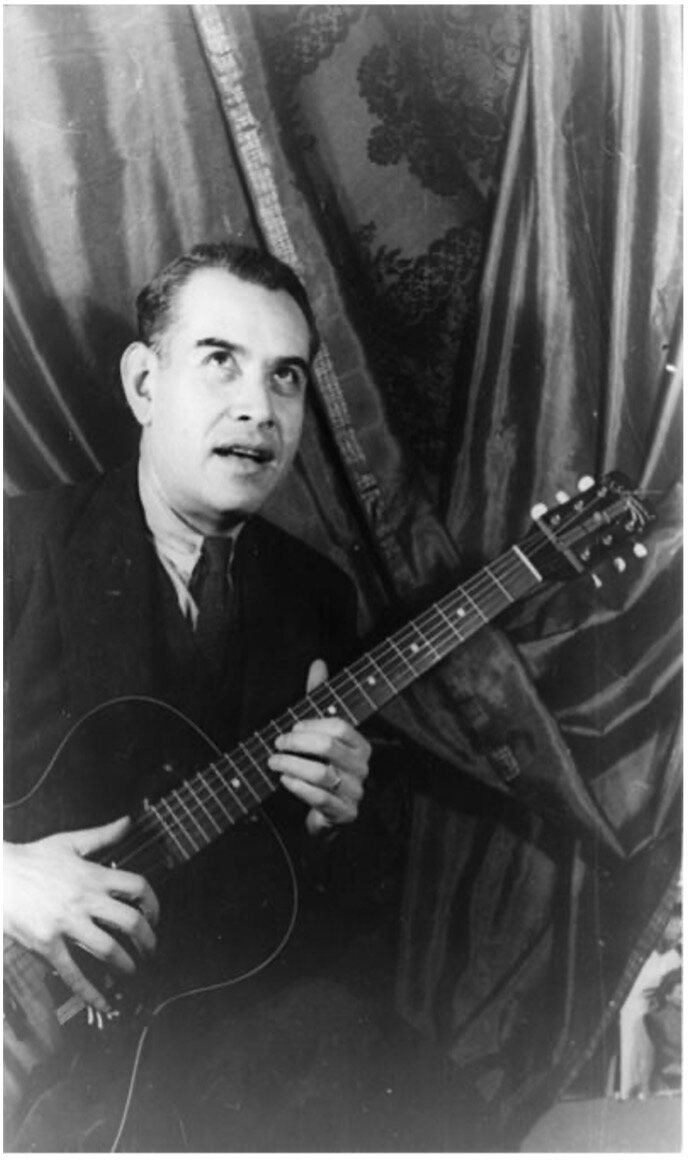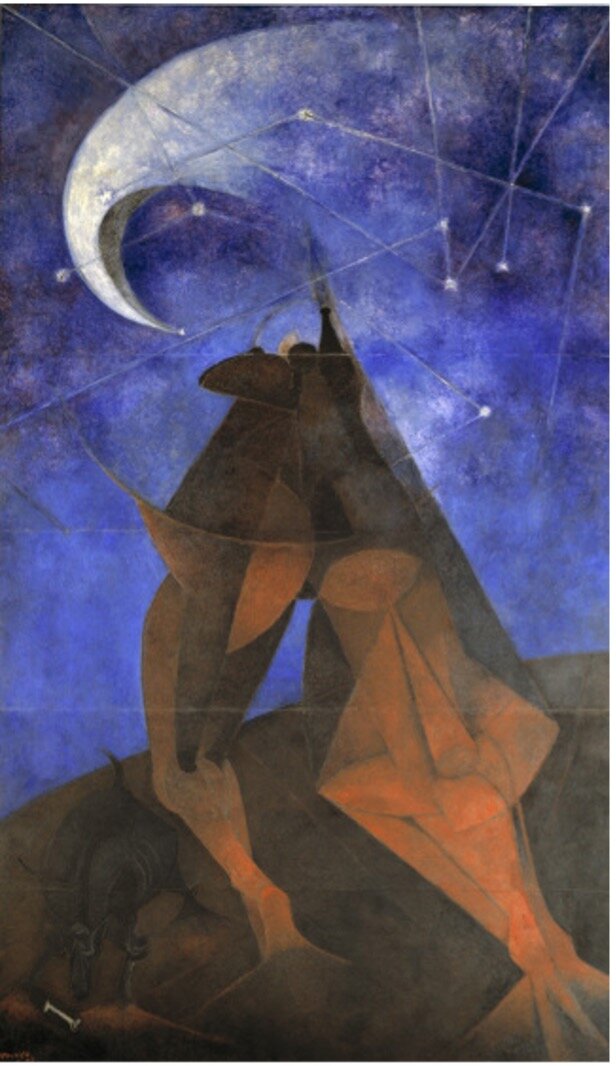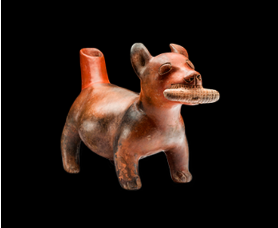Tamayo and the Indigenous Image
After reading this month's Recommended Read, John Nieto: Forces of Spirit, I became incredibly intrigued by Nieto and his inspirations. He was a man of the arts, basking in the hues of his thoughts and dancing to the beats of his heart. During my read-through, I couldn't help but realize that he was reminiscent of another great painter during these years: Rufino Tamayo. Interestingly enough, Nieto lists this painter and musician as a point of interest in his biography, even creating works directly inspired by the Mexican artist. Out of all the artworks and artists I've researched over the years, Tamayo's artwork was the beacon in the night, reminding me to reflect on my ancestry and culture. It is to no surprise that his painterly style and indigenous iconography shined a light on Nieto and other artists at the time. However, this begs the question: How did Tamayo speak of the Indigenous image, and what did it mean for the world?
Rufino Tamayo (1899-1991) was an Oaxacan painter and a Modernist powerhouse. From landscapes to still lives, Cubist portraits to eerie constellations, the Mexican multimedia artist was a creative force to be reckoned with. Considered a formalist—one fixated on components such as line, color, etc.—Tamayo was a contrarian in his home state of Mexico, as the power of Social Realism dominated the playground. Muralism was on the rise, championed by Los Tres Grandes (Diego Rivera, Jose Clemente Orozco, and David Alfaro Siqueiros), and Tamayo grew increasingly more resilient towards their artistic intentions. Now becoming unpopular at the Homefront, the Mexican painter fled and traveled around the world, experimenting with the European Avantgarde and embracing the formalist dynamism that came with it. But as he developed a keen eye for abstraction and geometric form, the maestro never lost sight of his identity and cultural roots.
Following the Mexican Revolution (1910-1921), identity and el indigenismo, or indigenous inclusion, were vital to his creative drive. This movement concentrated on the expulsion of European power and the Bourgeois, ultimately calling for a revival of the nation's indigeneity and spiritual roots. The Big Three, notable for their artistic contributions, favored the Revolution's goals and attempted to achieve its results. The Revolution called forward Indigenismo or a rise in Indigenous identity to advance the Mexican culture and the Mexican state. The artists collectively believed that a social realist approach was the best method of contacting and educating the masses while also persuading them that the Socialist Avenue was the clear victorious journey to benefit the population. However, Tamayo had a different idea.
During his time as the department head of Ethnographic drawing at the Natural Museum of Archaeology, Tamayo was exposed to the valuable world of pre-Columbian treasures. This position was incredibly influential to the artist's career, as he would develop a keen interest in pre-Columbian arts - even adopting Indigenous iconography in his works. However, as Tamayo himself states, just because a Mexican paints a Mexican subject does not justify a clear representation of his ethnicity, race, culture, etc. Therefore, what Tamayo was learning and actively demonstrating was creating symbols linked to his Zapotec influence. With that said, Tamayo was hardly vocal about his indigenous genetics, so it is not entirely fair to base it on this aspect. Instead, these symbols are charged by his artistic belief in bettering and advancing the nation by portraying recognizable Native subjects in a novel aesthetic — by acknowledging the country's past but with the influence of world technology.
El Hombre, or the Man, was painted in 1953 on panels in one of his most significant murals. Surrounded by the cool tones of the night, a man is depicted reaching up into space. His body enlarges down towards the foreground, and his feet are rooted into the earth as he stretches his arms into the abyss. His hands and upper body vanish into the stars, where the moon strikes down like a sickle and slices his torso in two. He is composed of varying geometric shapes and acute angles, mimicking the angular motion of the constellations. He is painted in the same earthly ochres as the platform on which he is grounded - resembling the palette of ceramic pottery. Tamayo was notable for his rich, restrictive palette - utilizing the tones of the earth as inspiration for his color choice. In a 1990 interview, Tamayo explains that he derives these colors from nature and the earth, just like the Pre-Hispanic did with their pigments, calling it his "Mexican color." Siennas, ochres, umbers galore seep into the Man's craggy, jagged skin, almost combining his rocky exterior with the colors of the land, all characteristic incredibly linked the raw materials that the Indigenous may have utilized.
The sky challenges this Man and his footing in rich blues and deep purples. The stars play in a white fluorescence as the moon swoops away from his grasp. Tamayo had a great fascination with night scenes. They were symbolic of space, the outside world, and the potential future Mexico could attain. He was a passionate Internationalist, and his desire and encouragement for his homeland to expand beyond its borders were reflected by the government's advancement towards world participation. It was an aerial battleground between awe and terror, illustrating the artist's perspective of explorative technology amid the Cold War.
I would also like to draw attention to the small dog to the left of the Man. Tamayo is also prominent for his representations of animals as commentaries of global conflict. With a background in ethnography, he, once again, incorporates Indigenous iconography into these modern paintings. While it may not represent wartime allegory or even its relationship with humanity, its inclusion is vital to the representation of Native arts. While Man reaches up into the endless possibilities of futuristic advancements, he is still connected to the earth - the same land his ancestors once called home. Perhaps he was inspired by the figures found within the National Museum of Archaeology, where he worked as a young adult.
Rufino Tamayo is sometimes considered "the Fourth Great One" alongside his Mexican contemporaries Diego Rivera, Jose Orozco, and David Siqueiros. However, his adamant pursuit of grounding his modernist approach with ancestral motifs separated him from the others. Tamayo did not identify as an Indigenous artist, but his ideas of native inclusion for progression were evident. It was never about the image itself; rather, it was about establishing a bridge connecting a culture's past to its future—a universal message viable for the whole world.




